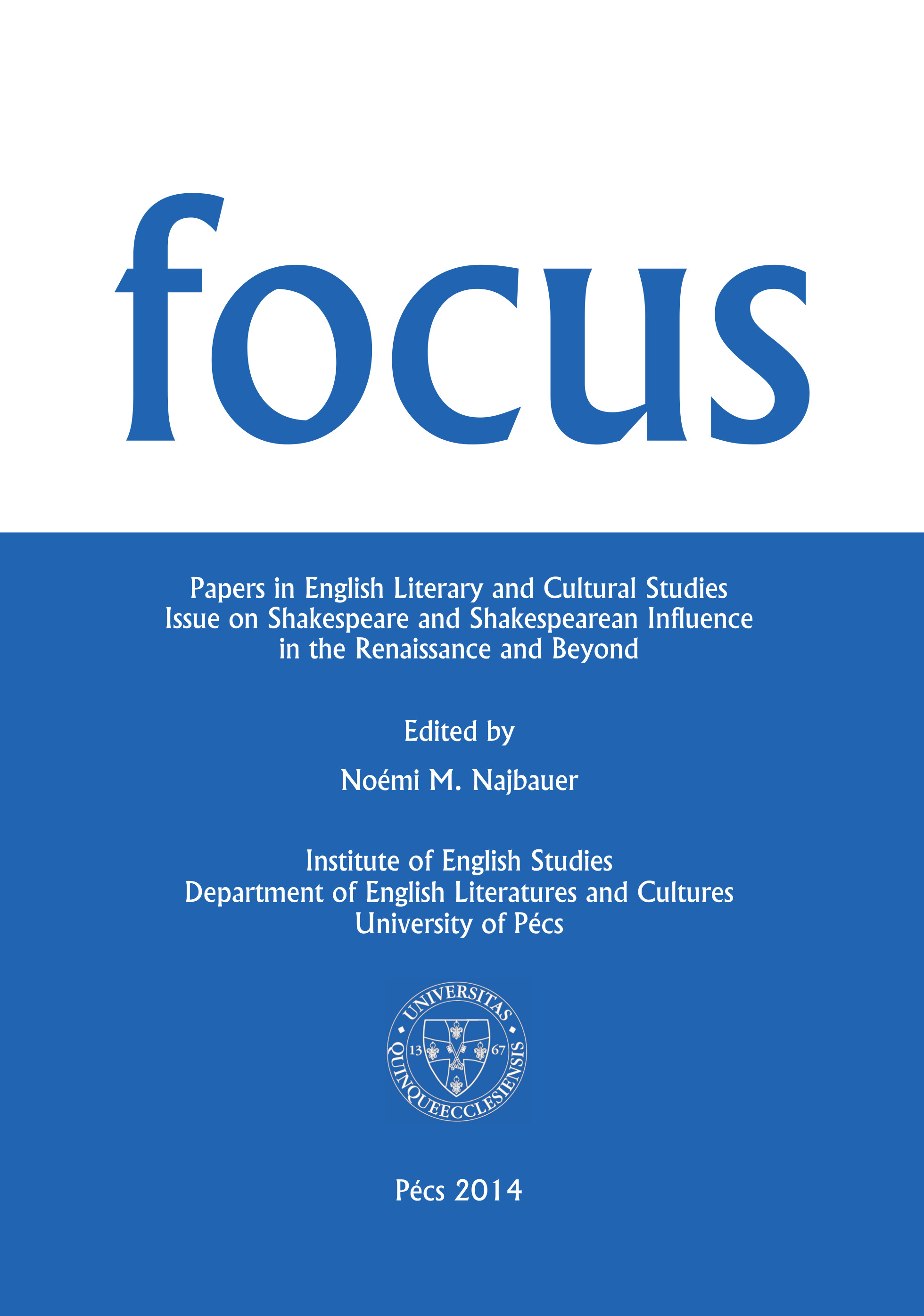The Influence of Early Modern Theories of Governance on the Corporeal Images of the 1608 King Lear Quarto
Keywords:
Shakespeare, Corporeality, Governance, King Lear, TheatreAbstract
Focusing on the figure of the monarch, Shakespeare’s King Lear reflects the nature of kingship from a delicately refined Renaissance point of view. Serving as a dramatized version of the contemporaneous genre “mirror of governance,” the 1608 chronicle history thematizes such central concerns of power as responsibility, inheritance, and flattery, which were particularly topical in the early Jacobean era. While the dramatic structure of the play strongly resembles that of political moralities (see Bradley 226, Mack 58, and Potter 152), the poetic text draws heavily upon powerful images referring to the human body as a whole and also to its parts (see Spurgeon 339, Hillman 81). Although today scholars tend to turn to the references concerning Lear’s physical body, the author of this paper sides with critics including Mary Axton and Albert Rolls, whose studies link King Lear with Renaissance p olitical concepts based on the analogy between the state and the human body. In what follows, the paper first summarizes the presence of the corporeal images in contemporaneous governance theories, and then it shows how they determine historical readings of the 1608 King Lear quarto.
Downloads
Published
How to Cite
Issue
Section
License

This work is licensed under a Creative Commons Attribution-NonCommercial-NoDerivatives 4.0 International License.
FOCUS: Papers in English Literary and Cultural Studies follows the principles laid down by Creative Commons, which provides guarantees for the Author’s copyright while also ensuring that intellectual properties are made available for the wider public in a digital form. All papers submitted to the journal apply the following licence conditions (indicated on the journal’s website as well as in individual publications):
“© This work is licensed under a Creative Commons Attribution-NonCommercial-NoDerivatives 4.0 International License.”
You are free to:
- Share, copy and redistribute the material included in the journal in any medium or format under the following terms:
- Attribution — You must give appropriate credit to the Author, and indicate the original place of publication [FOCUS: Papers in English Literary and Cultural Studies, Issue nr., page numbers.].
- NonCommercial — You may not use the material for commercial purposes.
- NoDerivatives — You are not allowed to remix, transform, or build upon the material.
- The above conditions must always be indicated if the journal material is distributed in any form.
- The above conditions must always be met, unless a written permission signed by the Author and the Editor-in-Chief states otherwise.

